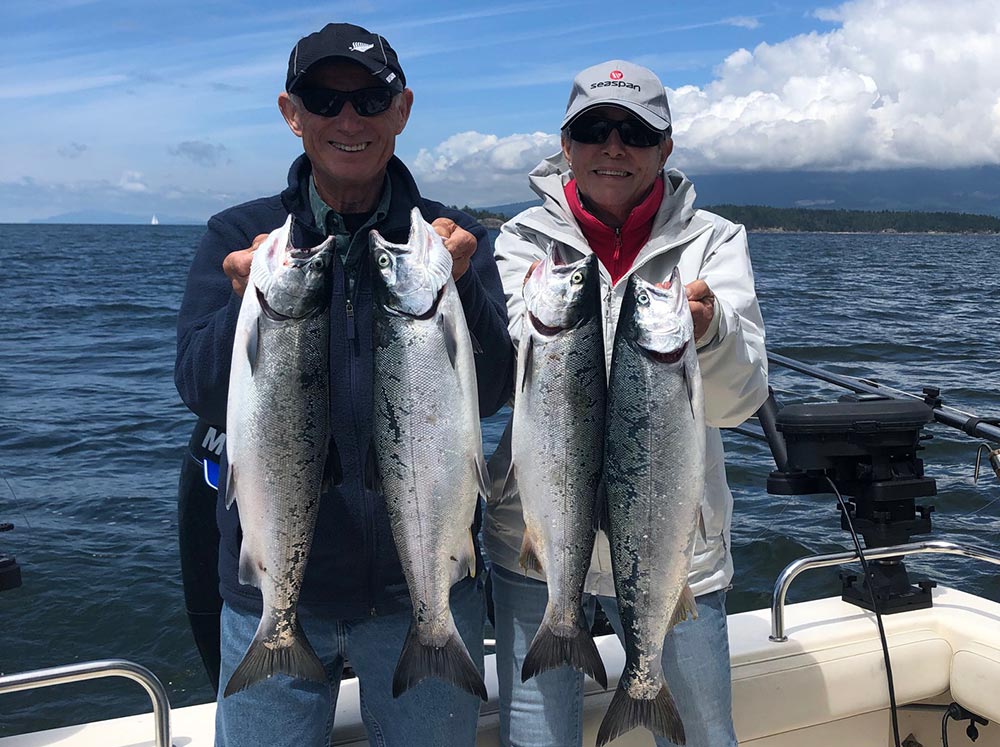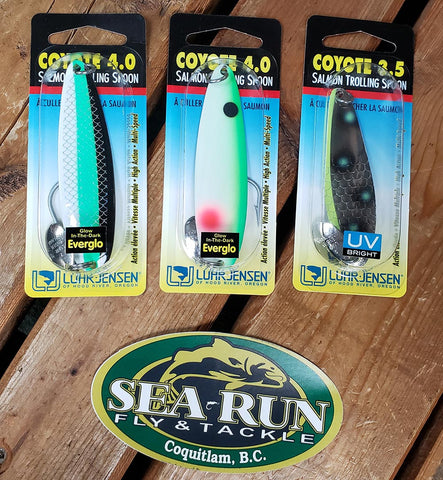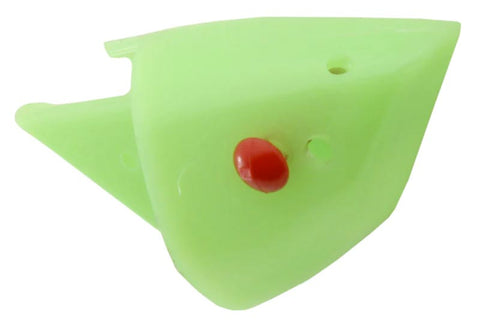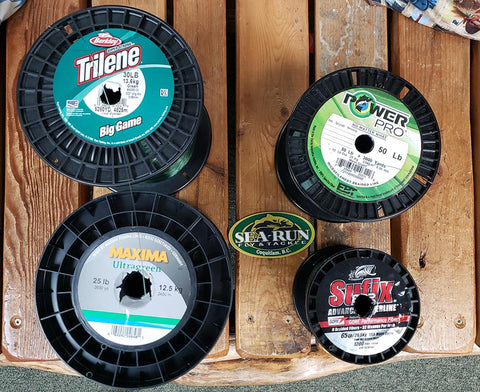Customer Login
If you are already registered, please log in.
Articles
Coho salmon are a pretty remarkable fish by all accounts. While spawning does happen in larger bodies of water, Coho do very well in tiny little creeks and ditches. It can be amazing to see where they spawn, sometimes in places that have water in the fall but run completely dry in the summer.
They’ll spend at least one winter in freshwater before heading out to the ocean to feed and grow and boy, do they ever grow! A 5”-6” smolt can grow up to 1mm per day when they hit the ocean. They prefer to feed on small crustaceans, squid and small bait fish. Coho salmon can obtain a weight of up to 8lbs in less than two years at sea.
When in that feeding cycle, Coho will readily bite, sometimes to a point of pure gluttony. Coho have long been revered as a gamefish due to their willingness to bite, their aerial acrobatics and aggressive runs. As a bonus to all of this, they’re absolutely delicious table fare. For some people they’re actually the preferred salmon to eat.
Trolling is one of the most popular ways to target Coho salmon in saltwater. While we do see trolling with a downrigger as being one of the most popular and most effective ways to target these fish, it is also possible to catch them without a downrigger due to their feeding behaviour higher up in the water column. In fact, Coho can sometimes be seen feeding on bait fish right on the surface.

We will look first at using downriggers for trolling. Given the surface orientation of Coho, lighter cannonballs can be used without hindering your effectiveness like it can when trying to fish deeper water for Chinook salmon. The lightest we would use would be a 10lber with 15lbers still being the most preferred.

Trolling speeds for Coho should be quite fast as they love a high-speed chase. Your GPS speed will always be a bit subjective, as going into, as opposed to going with a current can change this, but 3.0mph-3.5mph is a good target speed. As mentioned, Coho are typically found higher in the water column. Good depths on your downrigger can be 15’-60’. This range isn’t an absolute. If fishing is slow don’t be afraid to play around a bit deeper to see if there’s some fish lurking deeper down.
No downriggers on your boat? No problem. Given the shallower depths commonly travelled by Coho, a mooching weight or a mooching ball weight in 2oz-8oz is enough weight to get you into a Coho’s strike zone.

Your fishing depths are a bit more of an educated guess when fishing this way. To gauge our depth, we will count the pulls of line off the reel. A “pull” should be about 2’. The more line you pull off the reel and the heavier your weight, the deeper you will be able to fish.
When trolling for Coho we can use spoons, hoochies or baits such as anchovies or herring.
First let us look at using hoochies. Hoochies are really a downrigger-only lure as you must use a flasher to give the hoochie action. Hoochies are incredibly effective for Coho.
There are a few really enticing things about using a hoochie. It is highly effective and very durable. Even the little sharp teeth that Coho have don’t do much damage to a hoochie. You can catch a lot of fish on one lure.

When using a hoochie, we always, always use a minimum of 40lb leader material. This heavier line works best for transmitting the action from the flasher to the lure. Using this heavier line also leads to fewer break-offs or leader changes so there is lots of fishing time when running hoochies.
The other important piece to the hoochie puzzle is the length of your leader. Shorter is the name of the game. 22”-30” would be the recommended length. These shorter leaders are important in giving the lure the best action to attract Coho. Popular colours to use are White (Casper), Glow, Glow with Green Spots, Blue Meany and Purple Haze Pearl.
For flashers, some popular colours to use are the Gibbs Highliner Bon Chovy, Gibbs Highliner Watermark White, Gibbs Highliner Lemon Lime Chartreuse, Oki Tackle Big Shooter Purple Phantom, Oki Tackle Big Shooter Green Footloose, Oki Tackle Big Shooter Green Onion Glow, Hot Spot Silver Betsy, Hot Spot Clear Jelly UV, Hot Spot Chartreuse Anchovy and Hot Spot Silver Green. These flasher colour suggestions will be the same for spoons and bait.

Using spoons is an option that works with downriggers and flashers as well as fishing without downriggers. Spoons have their own action and do not require a flasher to make the lure effective. Spoons in the 3.5” or 4” work well. Our leader length for spoons is 5’-6’ with a breaking strength of 25lb or 30lb.
Some go-to choices for spoons would be Coyote Spoons Glo Kitchen Sink, Yellow Tail Glo, Glo Green, Fl. Green/Chartreuse UV.

Gibbs Skinny G Spoons in the following colours Bon Chovy, No Bananas, Outfitter and Herring Aid are also effective.

Then there are Gold Star Kingfisher Spoons in Super Pearl UV Chartreuse/Black Dots, Irish Cream, UV White Lightening and Super Pearl UV Green Lighting.

Our last bunch of spoons is the Gold Star Coho Killer Golden Nugget, Kitchen Sink, UV Silver Knight Green Dots and the UV Silver Knight White Dots.
Also, be sure to check out the Luhr Jensen Koho King spoons.

Finally, natural bait such as anchovies or small herring can be trolled. Like spoons, these baits can be fished with or without a downrigger as we use a “teaser head”. A teaser head is a plastic head that the bait is inserted into and secured. It gives your bait a roll like that of a wounded bait fish. It is imperative to brine your bait prior to usage. If you don’t take this important step, the bait will become mushy and fall apart quite easily.

There are a few different ways to cure this bait. One method would be to simply cut the packaging open, pull out the tray with the bait and completely cover it with Pro-Cure Rock Salt. Then place the tray in a small cooler or container and let it sit overnight in the fridge.
Another popular method is to use Pro-Cure Brine-n-Bite. This is a powder that is mixed with water. The bait is then placed frozen into this brine to firm up.
Rhys Davis teaser heads are one of the more popular choices. They are available for anchovies and herring. Some of the most popular colours are Glow Spatter Chartreuse, Glow Bloody Nose, UV Magma Green, UV Purple Haze and Green.

When setting up our rod for fishing with a downrigger, we like to use a ball bearing swivel or bead chain off the mainline. Then a McMahon Snap (scissor snap) is added off the swivel to do quick changes of the flasher.
When setting up for fishing without a downrigger and using a mooching sinker, we simply tie the mainline right to the swivel on the weight. Then we tie the leader to the swivel on the other side the weight. If using a mooching ball weight, a bead chain swivel or bearing swivel would be attached to the line after the sinker has been threaded on. Extra bead chain swivels or a crane swivel should be kept on hand to attach to your leaders and to clip onto the flasher.
The standard set up for trolling is a mooching/trolling reel. This reel is the most common salmon saltwater trolling reel. It holds an ample amount of line and is the most fun reel to play a fish on.

Popular choices for these reels are the Daiwa M-One UTD 400, Shimano 4000 GT, Trophy Tyee QR, Islander MR3 and the Islander TR3. These reels can be loaded with 25lb/30lb monofilament or 50lb/65lb braided line with 50’ of 25lb/30lb monofilament on top.

Rods are typically 10’6” and have a medium or medium heavy rating on them. A mooching/downrigger rod can be identified by its lower back grip and reel seat positioning and longer upper half. Popular rods are the Okuma Salish, Shimano Technium Mooching Rod, G. Loomis GCX Mooching Rod, Trophy QR and the R3ef Mooching Rod.

We hope that this article helps guide you in the right direction for trolling for Coho salmon in the saltwater. Good luck and have fun!
If you have any questions, please feel free to contact us by email info@sea-run.com, by phone at 604-931-5044 or stop by Sea-Run Fly & Tackle at #110-1140 Austin Avenue in Coquitlam BC.
Good luck on the water.
Follow and Like Us
Like us on Facebook: https://www.facebook.com/searun
Follow us on Instagram: http://instagram.com/searunflyandtackle
Email us: info@sea-run.com
2 comments
Customer Login
If you are already registered, please log in.
100% I’ve had many thrilling days past high speed trolling polar bear hair bucktails with pearl or chrome spinners at the front of the bucktail. 10 ft leader to a 3/8 oz bead chain swivel and 20,15,25 pulls behind the boat. Everyone holding their own rods as we do lazy s turns which changed the speed of the bucktails depending on who was on the inside or outside. Once you get a strike usually a second or third strike happens within a fw seconds as coho travel in schools . Try it and put the light tackle back . Once you catch oine on the fly you won’t forget it. PS 65 yrs of age and miss the pre downrigger days!!
I’m surprised this blog didn’t include fishing with bucktail flies fished on the surface. For those that have used this technique it can be very successful and it definitely is far and away the most exiting way of fishing for coho. Perhaps it’s my age (72) but it was very common (especially prior to the development of downriver fishing) particularly with the use of polar bear hair flies.